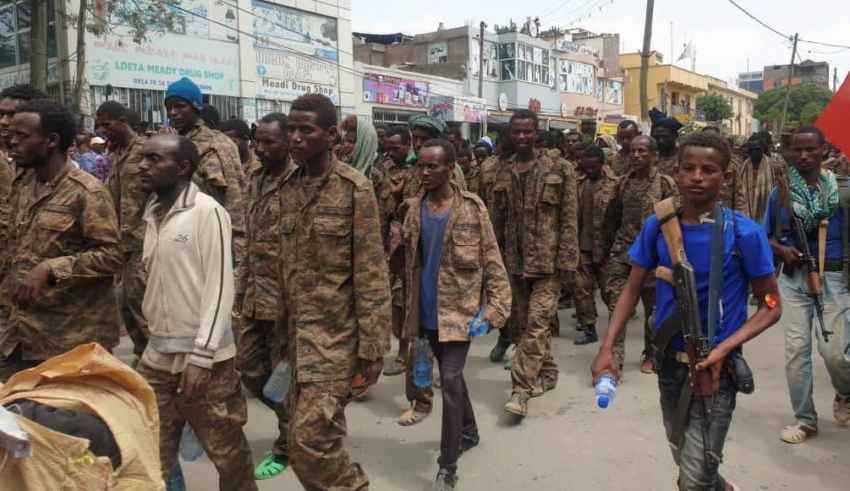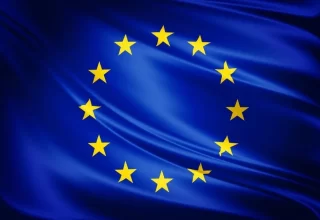
After one year into the conflict in the Tigray region of Ethiopia, the estimated deaths are thousands, the displaced persons are millions, and hundreds of thousands are living in famine conditions. Although the international response has put some pressure in the area, establishing punitive measures, such as visa restrictions and restrictions on economic and security assistance, the situation seems to remain the same. This is why many criticized the endeavor of response as a mistake, while others consider it as a destabilizing initiative that may result in general unrest to Ethiopia and the broader region.
There is a growing disapproval of the Ethiopian government regarding the US involvement in its affairs, as the former believes that the US puts in danger the existing alliances and/or potential international cooperation. Despite Abiy Ahmed Ali’s compromise to conduct an investigation related to atrocities, and acceptance of the unfettered humanitarian access, he still desperately tries to escape the pressure.
The international response until today couldn’t contribute to the resolution of this conflict, due to internal dynamics, which can be identified in four components.
First of all, Ethiopia’s conflicts are ethnic-related, spread in every region of the country, and most importantly, they are interconnected. The violent incidents are based on targeted killings -due to political, religious and ethnic identity-, death of civilians -even if they are unarmed-, intense phenomena of internal and external displacement, public or private property destruction, and sexual violence. Besides the special nature of these violent incidents, the international response underlined only the conflict in Tigray, as this very conflict accounts for an implication on regional security and contradicts the rules of international order, due to potential spill-over effect. Focusing only in one part of the conflicts, it demonstrates a selective approach which is not at all a constructive contribution to de-escalation of the tensions.
Secondly, the ethnic federalism as an existing political endeavor is being favored by the international response, due to its former success. It is true that the country was at peace during the 1991-2018 period under the TPLF government, nevertheless, it was a temporary situation of fragile political stability. The ethnic federalism is highly problematic, given the existing conflicts and human security problems, which until today include: the formation of a new hierarchy in ethnic regions -between natives and settlers-, the growing polarization among political elites on inter-group and intra-group level, the issue of displacement and the discrimination of ethnic minorities in regions with other ethnic majorities, the conflicts for claim or maintenance of ethnic administration in territorial boundaries and the emergence of ethnically organized radical youth groups. The international response shows no intent to assist the state reformation.
Thirdly, the promotion of legal aspects of the conflict, such as human rights and international law, undermine the political aspect. Of course human rights and international rules are crucial to be applied in every community, yet the conflict in Ethiopia is mainly political, where state and non-state actors proceed to violence in order to achieve their political goals. Specifically, the political violence is demonstrated by challenging or protecting state sovereignty, keeping control of areas inhabited by multiple ethnicities and cultures, affecting recognized ethnic-based politico-administrative regions, and influencing ethnic-based belongings and rights of the citizens. Conflicts such as the Tigray’s are more than a race for power, as they express the protection of marginalized ethnic or minority groups.
Last but not least, the international response attempts to succeed a political settlement by setting punitive measures and pushing the Ethiopian government to sit on the negotiating table. As far as the international actors concerned, such settlement needs to be immediate, nevertheless this is a very challenging goal, considering the use of violence of resistance groups, the polarized political elites, the inherited tyrannical way of governance combined with undemocratic political culture, the divided political situation along with confused Ethiopian population, and the existing security issues with countries from the broader area, such as Sudan, Egypt and Eritrea. As a future goal, Ethiopia needs to be guided towards a more democratic reformation, through humanitarian assistance that still respects the principles of accountability and responsibility. The country also needs to proceed to depolarization and deradicalization of the political environment, in order to establish a more efficient peacebuilding initiative, including the aspect of human rights. It is important to remember that only Ethiopian stakeholders can resolve the conflicts. International response is a facilitator and alone itself cannot pull the strings to achieve results in practice.
Conclusion
It is essential for Ethiopia to receive comprehensive peacebuilding support that includes the diverse and interlinked aspects of conflicts across the country. The existing international response has to understand the necessity for state or constitutional reform as a vital part of the overall comprehensive international peacebuilding assistance.
The intent of the international community to assist Ethiopia to achieve a sovereign and united state should be demonstrated in practise as well. In order to complete such a goal, the international response has to deal with the political violence, which is the major burden against this cause. Following the special needs of such a complicated environment, international response should establish a more targeted approach to its assistance and quit an unrealistic political settlement among polarized elites.
References
- Abai, M. (2021, January 06). War in Tigray and Crimes of International Law. Canadian Centre for Victims of Torture. http://www.aigaforum.com/article2021/Abiy-War-in-Tigray.htm
- Addis Standard. (2021, May 17). Just in: Ethiopia says campaign to exert undue pressure against it regrettable push by partners to involve the tplf in national dialogue unacceptable. https://addisstandard.com/just-in-ethiopia-says-campaign-to-exert-undue-pressure-against-it-regrettable-push-by-partners-to-involve-the-tplf-in-national-dialogue-unacceptable/
- Al Jazeera. (2021, November 02). Ethiopia declares nationwide state of emergency. https://www.aljazeera.com/news/2021/11/2/ethiopia-declares-nationwide-state-of-emergency
- Al Jazeera. (2021, November 03). Ethiopia’s war marked by ‘extreme brutality’ from all sides: UN. https://www.aljazeera.com/news/2021/11/3/ethiopias-war-marked-by-extreme-brutality-from-all-sides-un
- BBC. (2021, June 29). Ethiopia’s Tigray war: The short, medium and long story. https://www.bbc.com/news/world-africa-54964378
- The European Institute for International Law & International Relations. (2021, April 17). Analysis of Tigray massacre raises questions for Ethiopian Army. https://www.eiir.eu/international-relations/africa/analysis-of-tigray-massacre-raises-questions-for-ethiopian-army/
- Freeman, L. (2021, May 24). New U.S. Hostilities Against Ethiopia Threatens Horn of Africa. Africa and the World. http://lawrencefreemanafricaandtheworld.com/2021/05/24/new-u-s-hostilities-against-ethiopia-threatens-horn-of-africa/
- Nyssen, J. (2021, February 19). Catastrophe stalks Tigray, again. Ethiopia Insight. https://www.ethiopia-insight.com/2021/02/19/catastrophe-stalks-tigray-again/
- Walsh, D., & Dahir, A. L. (2021, November 04). Why Is Ethiopia at War With Itself? The New York Times. https://www.nytimes.com/article/ethiopia-tigray-conflict-explained.html
By The European Institute for International Law and International Relations.














